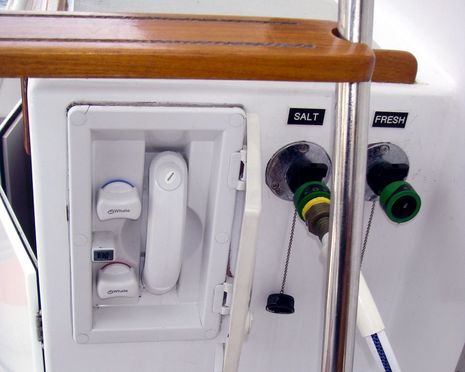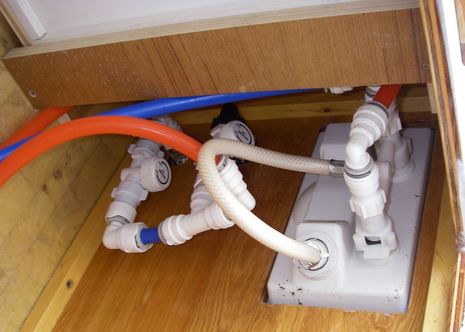System forensics, assume nothing!

Here's a Gizmo plumbing detail that turned me on from day one: A hot/cold shower head plus salt- and freshwater outlets (with quick disconnects, yet) all clustered neatly under the fly bridge ladder, with hose storage. They're even labeled well! But, when I first fired up the freshwater hose to rinse off the cleaning work I'd started with salt -- the resources are limited where I'm tied up -- I got a funny feeling and took a taste...
It was saltwater too! Well, it wasn't hard to confirm (see below) that both hose outlets were plumbed to the very same saltwater feed, even though working freshwater piping is right there. WTF? Why would someone do this? I tried to mentally reverse trouble shoot the situation that might lead to this strange fix, but got nowhere. So I replumbed it, which turned out to be quite easy with Whale's snap-together/pull-apart pipework system. And it works fine just the way it was designed to. Leaving only a mystery, and a reminder. It would be fabulous if power and data cables were as obvious as plumbing, but they aren't, and there are lots more of them. And no doubt lots of mysteries lurking. I've already started poking behind panels, clipping cable ties, and removing electronics no longer needed on the boat. But I'm trying to be CSI careful, document everything, and assume nothing.


 Share
Share
Hi, Ben...
It seems like something a PO might have done to prevent guests or relatives from 'draining the cistern on a Saturday night' and waking up to empty freshwater tanks a hundred miles from the dock!
I'm still unravelling wiring mysteries on my 40 year old motorsailer.